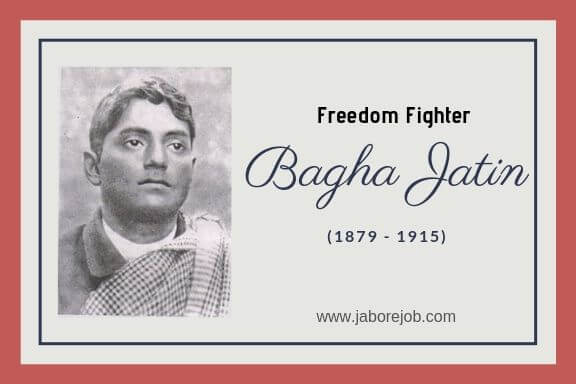Five Year Plan is a predetermined goal to achieve for the upcoming years with a planned strategy and budget allocation along with the estimation of income and expenses drafted in an official manner referred for the directions of the Government.
Types of Five Year Plan in India
Economic planning in India can be divided into four types, such as:
1. Perspective plans
The Perspective plan is a long-term plan. In general, it is formulated for a period of 15 – 20 years.
2. Five-year plans
The Five-year plans, as the name suggests, are designed for a period of 5 years. It is an integral part of the perspective plan.
3. Annual plans
The Annual plan is part of the 5-year plan. It is prepared for the year. Therefore, for each 5-year plan, five annual plans will be prepared in detail.
4. Rolling plans
The Rolling plans do not have a fixed period. These plans only last and continue. As it progresses, the year that has been completed is eliminated and a year is added to the end.
Five Year Planning in India
1. First Five Year Plan (1951 – 1956)
- It was developed based on the Harrod-Domar model
- Its main objective was the agricultural development of the country.
- To rebuild the economy that has been damaged due to the effect of the partition of India and the 2nd World War this was necessary.
- In this plan, the construction of roads, the extension of transport and communication facilities, and the construction of irrigation projects and water supply have been prioritized, which contributes to the growth and development of the country.
- It plans to establish an administrative and organizational structure necessary for the execution of development programs.
- Improve production capacity in the economy.
- To improve the availability of food in the country.
This plan has been successful and has achieved a growth rate of 3.6% (more than its objective), the target was just 2.1 %.
The plan gave employment opportunities for a lot of people in the country and benefited for supplementary industries of agriculture, at the same time 5 IITs were established.
2. Second Five Year Plan (1956 – 1961)
- It was developed based on the P.C. Mahalanobis Model.
- Its main objective was on the industrial development of the country.
- In the places of Durgapur, Rourkela and Bhilai Hydro Electric Power Projects and 5 Steel Power Plants were established.
- It aimed to increase the annual capital investment rate from 7% – 11% by the time 1960 – 61.
- Since the population was more in India expansion of job opportunities was a very important factor.
- By the time of the planning period per capita income growth rate was 1.9% per annul time frame, whereas the national income growth rate was 4.27%.
- During the period the inflation rate doubled than the first five-year plan.
- The Atomic Energy Commission of the Department of Atomic Energy was created on March 1, 1958.
The real growth rate achieved 4.2% compared to the target rate, which was 4.5%.
The emphasis on the development of heavy industries, which contributes to the rapid progression of industrialization in the countries.
3. Third Five Year Plan (1961 – 1966)
- This plan was also called ‘Gadgil Yojna’.
- Promoting the economy toward the self-sustaining stage of development and growth in the country is the fundamental objective of this plan.
- To restrict the importation of food grains, it is necessary to reach the position of self-sufficiency in the availability of food grains.
- A target of an annual growth rate of 6% for food grains and an annual growth rate of 14% for industrial production has been established.
- It also aimed to expand the basic industries to follow the process of industrialization in the economy.
- It was expected that the national income will increase by 30% and per capita income will increase by 17% per year.
The effective growth rate of national income is 2.5%, compared to 5% annually and the real growth rate per capita was only 0.2% per year. This plan fails miserably due to the war with China and Pakistan during this period of the plan.
Mainly the drought has pitted India, which is also playing a role in the failure of the plan. During the year Panchayat Elections and Secondary Education Board was formed.
4. Annual Plan (1966 – 1969)
- The fourth plan was to begin on April 1, 1966, but due to the failure of the third plan, production in several sectors stagnated and the Indo-Pakistan War.
- At this time period, annual plans were made and equal priorities changed towards agriculture, its allied sectors, and the industrial sector.
- In 1966, the government of India declared the devaluation of the rupees, but favorable results could not be obtained.
- The transition period of agriculture begins in 1966 when the green revolution took place in the country. High-yield seed varieties are used in the production of rice, wheat, jowar, bajra and corn to improve their productivity. For the effective use of this technique, a better irrigation system, fertilizers, pesticides have been developed in the country.
The growth objective was not established for these three years, but the real growth rate was 3.9%
In this plan, the economy tries to overcome the country’s failure during the third plan.
In this duration new agricultural plans were involved in the distribution of high -yield seeds, fertilizers, usage of proper irrigation methods and soil conservation took place.
5. Fourth Five Year Plan (1969 – 1974)
- There were two main objectives of this plan i.e. growth with stability and progressive achievement of self-reliance.
- During this plan, the slogan of “Garibi Hatao” is given during the 1971 elections by Indira Gandhi.
- Ensure a growth rate of 5.7% for the economic development of the country.
- To Develop backward areas and eliminate regional imbalances.
- To Regulate and Control of the money supply to stabilize prices in the economy.
- Family planning programs were launched during the reporting period to improve the standard of living and control the growth of the population in the country.
- To create job opportunities to reduce unemployment.
In the fourth plan, the annual growth rate of national income (the price of 1993-94) was only 3.8% lower than the target growth.
The annual growth rate of industrial production was only 4%, which was below the target growth rate of 8-10%. The production of general consumer products has increased.
In 1971, India’s war with Pakistan and the liberation war in Bangladesh hampered industrial development because the funds that are supposed to be used for industrial development are used after the war effort.
The nationalization of 14 banks and the first underground nuclear test were also carried out during this period.
6. Fifth Five Year Plan (1974 – 1979)
- In these terms agriculture was given the most priority, then it concentrated on industry and mines.
- The draft of this plan was prepared and launched by P.P. Dhar. This plan was completed in 1978.
- During the period National Highway Systems were introduced.
- An Act for Electricity Supply came into force in 1975.
After the promulgation of the emergency in 1975, the focus was on the implementation of the agenda of the 20 Point Program by Prime Minister, but due to the 1978 Janata Party took power it was terminated.
In general, this plan was successful and achieved a growth of 4.8% compared to the objective of 4.4%.
7. Rolling Plan (1978 – 1980)
- Under this plan, the Janata Party came to power and rejected the Fifth Five Year Plan and drafted a new Sixth Five Year Plan during the period.
Later Indian National Congress Government rejected the Sixth Five Year Plan in 1980 and introduced a new one.
8. Sixth Five Year Plan (1980 – 1985)
- The main motive of this plan was to establish technological self-reliance and eradicate poverty.
- This planning year was the stepping stone for economic liberalization.
- On 12 July 1982, National Bank for Agriculture and Rural Development(NABARD) was established by considering Shivaraman Committee.
- Family planning measures were focused to control the population growth level but not in force like China.
- This plan led to the end of the Nehruvian era.
- This was the only plan drafted twice in the history of Economic Planning in India.
- There was no proper control of prices which led to the close of ration shops and increased food prices and cost of living.
Anyhow, at last, this plan was beneficial with the achievement of 5.7% growth, the target was 5.2% only.
9. Seventh Five Year Plan (1985 – 1990)
- This was planned and executed by Congress party with Rajiv Gandhi as Prime Minister.
- The goal of the plan was to increase the productivity level of industries, creating employment opportunities, and to create a self-sufficient economy.
- This was the stage where the Private Sector was encouraged over the Public Sector.
Due to the rapid support is given by the Congress party to the private sector during the period, it resulted in more than expected with a 6.0% growth over 5.0% target.
10. Annual Plan (1990 – 1992)
At this point in time, due to the political instability in the Central Government 2 Annual plans were formed for the year 1990 – 91 & 1991 – 92, so the Eighth five-year plan was formulated in 1992 onward.
11. Eighth Five Year Plan (1992 -1997)
- P.V Narasimha was the Prime Minister from the Congress party who planned for this plan.
- Till this plan only Agriculture and Industries were concentrated but here focused on the development of human resources such as employment, education, public health care, and also involving NGOs, Panchayat Raj, etc.
- India became a member of the World Trade Organization (WTO) on 1st Jan 1995.
This plan was really successful with an annual growth rate of 6.8% against the target of 5.6%.
12. Ninth Five Year Plan (1997 – 2002)
- After 50 years of Independence, this plan came into existence, during this time period Atal Bihari Vajpayee was the Prime Minister from NDA.
- This Plan was developed to contribute to “growth with justice and equity” to benefit the general public and Government agencies in both rural and urban with proper planning and process.
- Empowered social classes, such as scheduled castes, included tribes and other backward classes.
All the work towards achieving higher growth got failed due to 6.8% growth v/s 7.1% target growth but overall development was good.
13. Tenth Five Year Plan (2002 – 2007)
- Dr. Manmohan Singh was the chairperson of the planning commission and Prime Minister of India during the period.
- The main aim of this plan was to increase GDP growth, Reduction of the Poverty Rate, and creation of more employment opportunities.
- Tried to reduce gender inequalities either by literacy and wages by 50% at least.
- This plan was aimed to increase per capita income by 2 times from the following year.
This plan also failed in achieving the target growth rate of 8.1%, it has achieved only 7.2%.
14. Eleventh Five Year Plan (2007 – 2012)
- This Plan was prepared by C. Rangarajan a great economist under the rule of the UPA Government.
- In this plan, the concept of Inclusive growth came into existence to increase the growth level faster in the economy.
- It aimed towards skill development and an increase in the enrollment of higher education by 2011 – 12.
But even after a lot of efforts again it failed, 7.9% growth was achieved towards the target 8.1% growth.
15. Twelfth Five Year Plan (2012 – 2017)
- This plan was initially continued by the UPA Government till 2012 – 14 later NDA Government continued from 2014 onward.
- The focus was to establish a faster growth and sustainable economy.
- This plan also gave importance to the modernization of the economy and infrastructural projects.
- In the year 2015, the Planning Commission replaced by Niti Aayog with the framework of a 15-year vision.
The growth rate was showcased as 8.2% but the National Development Council (NDC) approved 8% growth for the period.















